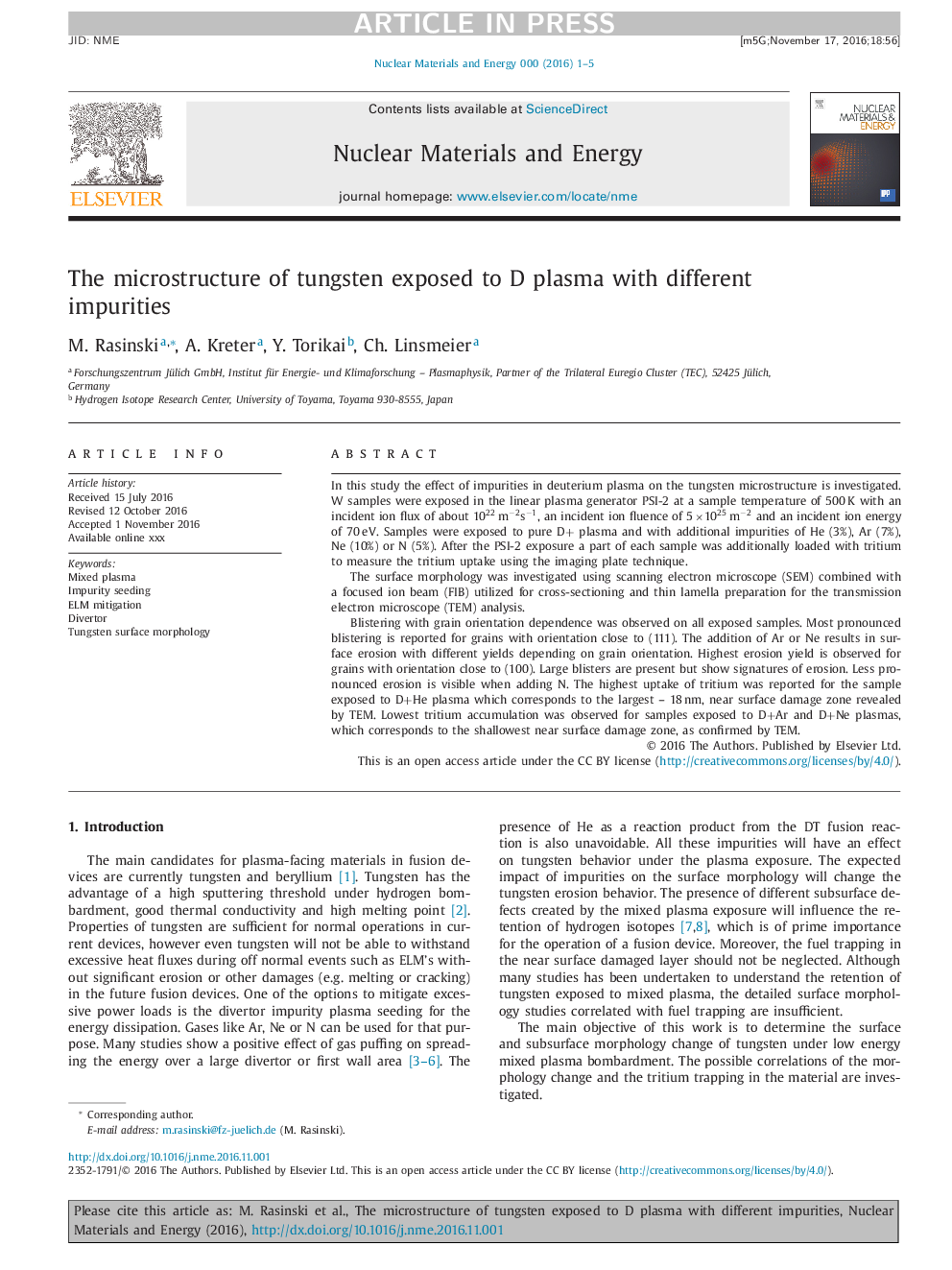| Article ID | Journal | Published Year | Pages | File Type |
|---|---|---|---|---|
| 7987466 | Nuclear Materials and Energy | 2017 | 5 Pages |
Abstract
Blistering with grain orientation dependence was observed on all exposed samples. Most pronounced blistering is reported for grains with orientation close to (111). The addition of Ar or Ne results in surface erosion with different yields depending on grain orientation. Highest erosion yield is observed for grains with orientation close to (100). Large blisters are present but show signatures of erosion. Less pronounced erosion is visible when adding N. The highest uptake of tritium was reported for the sample exposed to D+He plasma which corresponds to the largest - 18Â nm, near surface damage zone revealed by TEM. Lowest tritium accumulation was observed for samples exposed to D+Ar and D+Ne plasmas, which corresponds to the shallowest near surface damage zone, as confirmed by TEM.
Keywords
Related Topics
Physical Sciences and Engineering
Energy
Nuclear Energy and Engineering
Authors
M. Rasinski, A. Kreter, Y. Torikai, Ch. Linsmeier,
